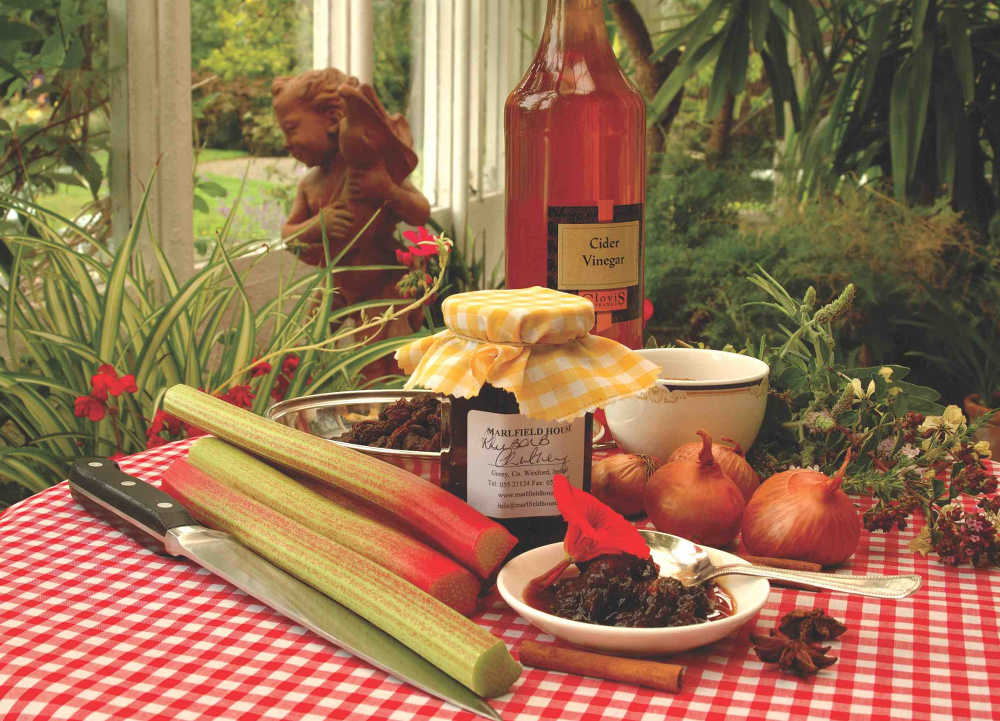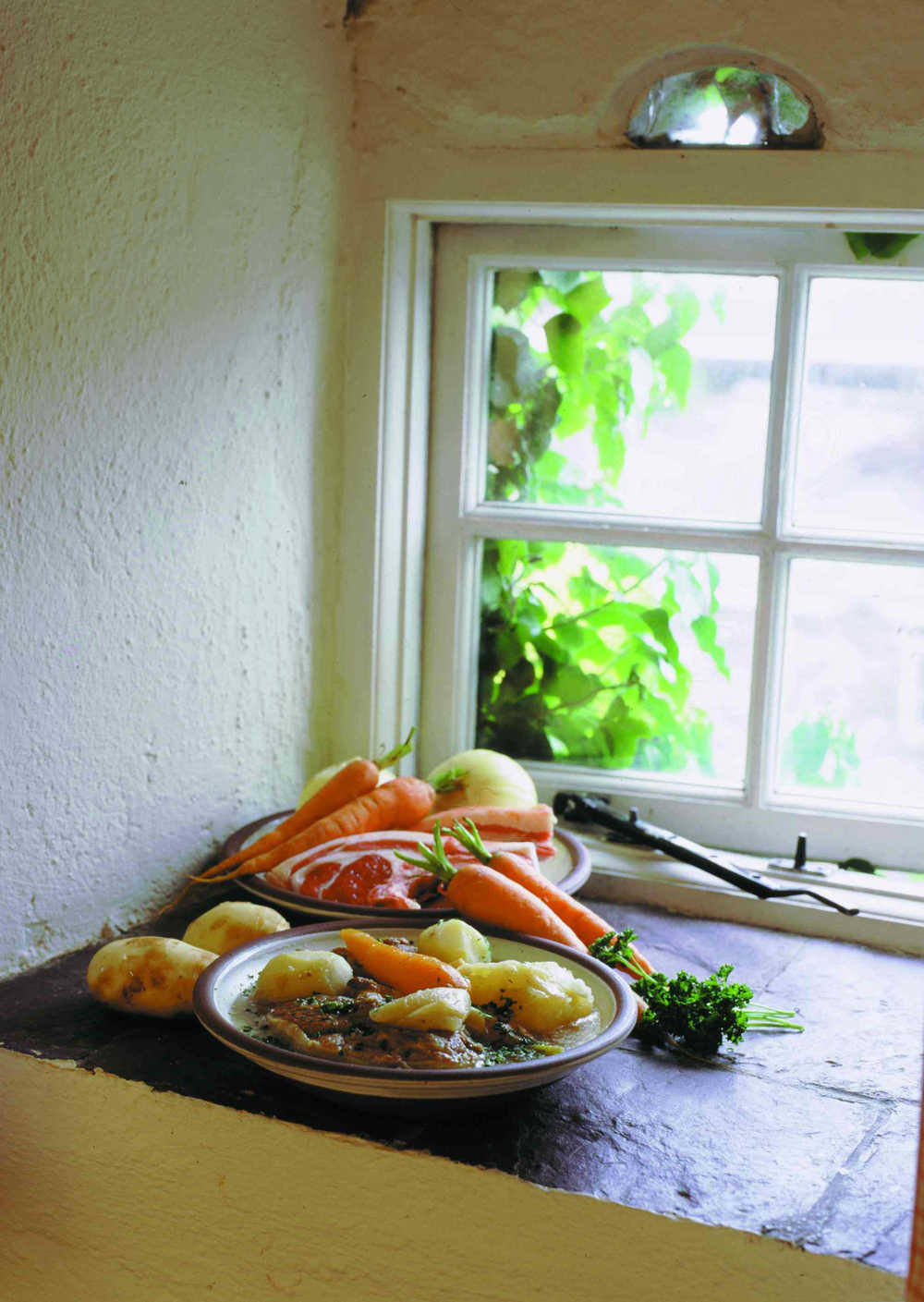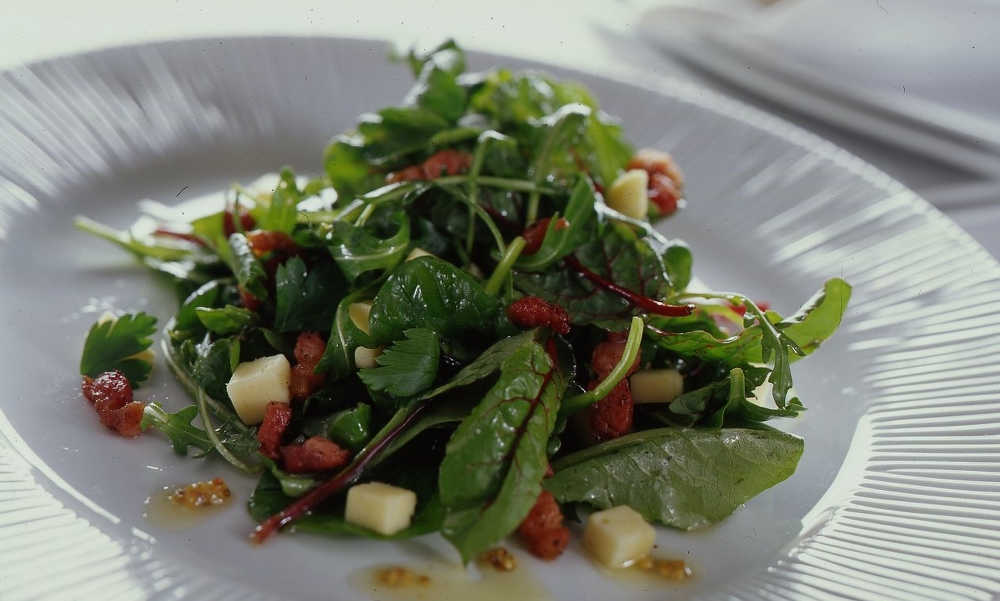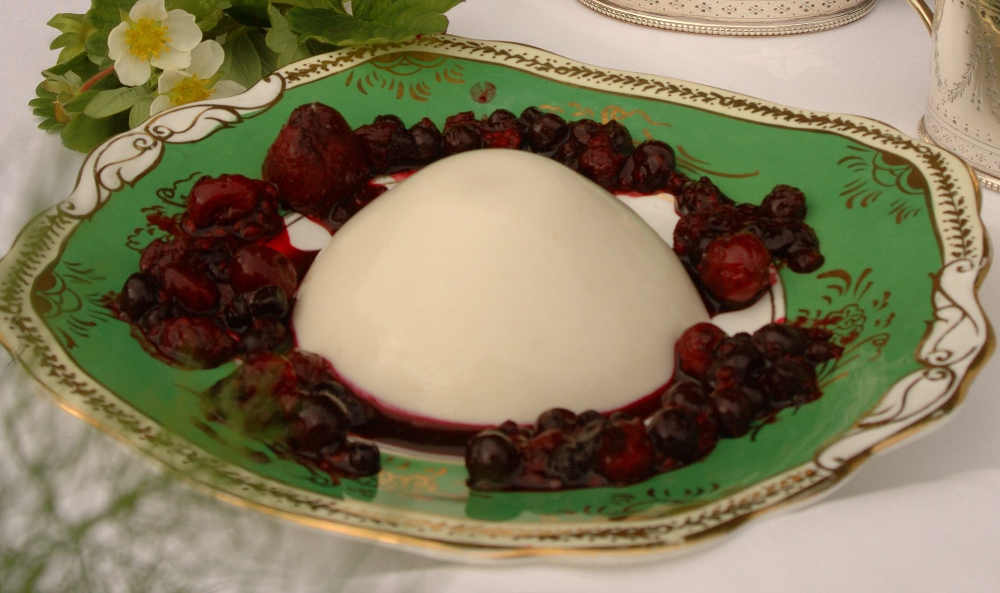Georgina Campbell's Cookery Feature - Place on a Plate
 Could 2016 be the year when we finally earn our stripes as ‘the food island’? There are still plenty of bad meals to be found in Ireland and foods that don’t deserve the name, but in many ways things have improved dramatically in recent years and there’s a sense of sea change in the air.
Could 2016 be the year when we finally earn our stripes as ‘the food island’? There are still plenty of bad meals to be found in Ireland and foods that don’t deserve the name, but in many ways things have improved dramatically in recent years and there’s a sense of sea change in the air.
Food tourism may be a new concept to many mainstream travellers, but it’s seriously big business internationally and our tourism authorities have not been slow to recognise its potential. Just a few years ago it would have been hard to see a place for Ireland in this market but, although this country is very much a newbie in the field, the hard work that so many people have been putting in for decades is finally paying off and all the signs are that the time is right for a big push.
Of those already seen as food destinations, France almost seems too obvious to mention, but the Nordic countries and other European destinations like Italy and Spain have seen huge benefits since making it onto the culinary hotlist, and many others around the world are reaping similar benefits. Irish food lovers living abroad can be frustrated by the dated but lingering image of Ireland as place of ‘corned beef and cabbage’, but that should be about to change as a number of initiatives come together to make a real international impact.
The work done on the ground for many years by organisations like Euro-Toques Ireland (www.euro-toques.ie) and Slow Food Ireland (slowfoodireland.com) is paying off, and the success of ambitious events like the annual Kerrygold Ballymaloe Literary Festival of Food and Wine in Co Cork, and Galway’s newer Food On The Edge has helped spread the message to influential chefs, food writers and other opinion makers internationally - so word of Ireland’s increasingly confident food culture is getting about in circles where good food opens doors.
Culinary holidays such as the bespoke tours organised by Texas-based Rachel Gaffney and the range of breaks recently announced by Good Food Ireland are attracting a discerning clientele and, at the more accessible level that will be of interest to a wide range of visitors, there is an ever-growing choice of activities including food festivals, markets, guided city walking tours and food trails - an impressive recent addition is The Sligo Food Trail.
Not all of these initiatives are equally good but, at their best - the deservedly acclaimed Burren Food Trail , for example - they are world leaders and will attract visitors with a serious interest in food, its landscape and sustainability. This is great news for us all, and particularly for rural Ireland.
So many individuals and organisations have been quietly working away for years and now there is a sense of the dots joining up, beginning to create a cohesive ‘Irish food scene’ where regional differences are celebrated. It is a joy to travel around and see the changes each year, and must be wonderful for visitors to discover.
You don’t have to be a ‘food tourist’ to enjoy the places where the best food is to be found, but demand from discerning visitors who are travelling to a country principally (or even exclusively) to experience the food culture is a great catalyst for raising standards, from which everyone will benefit - and especially the producers, whose hard work is being recognised as never before.
These new ‘food tourists’ or ‘culinary visitors’ don’t just want to see Ireland, they want to meet the producers, visit the markets, eat in the restaurants that showcase local foods and stay in the hotels, country houses, farmhouses and B&Bs that convey a real sense of place.
Watching Rick Stein in his search for the best food in Bordeaux recently, I was struck by the way he kept coming back to the lasting value of the traditional and the simple. Innovation, excitement and competition between chefs all play a leading role in creating exceptional experiences, and they do us all proud. But there is a lesson in Rick Stein’s comments - that we should never lose sight of the value of simple goodness. The real flavour of a country is not always found in obvious places.
The following recipes were all selected for my book, Ireland for Food Lovers which was published in 2011 but still has relevance. It was the first - and remains Ireland’s only - region-by-region guide to the best local foods and where to find and enjoy them, whether to buy or to sample in pubs, restaurants and food-focused accommodation.
Each regional section includes suggestions for ways to use some of its special foods at home - which, in many cases (as below), means simple, do-able recipes from some of the recommended restaurants, country houses, cookery schools and individuals who have made a difference to Ireland’s emerging food culture.
RECIPES:
 Ballymaloe Irish Stew
Ballymaloe Irish Stew
Irish Stew can be a truly great dish. A perfect example of the difference between memorable and mediocre, like all simple dishes it stands or falls on the quality of its ingredients. Done right, it’s an ideal dish for visitors. It reflects the agriculture of this country, suits the climate perfectly and is an anytime kind of meal for visitors on the move.
There are dozens of versions, most of which have more or less the same basic ingredients, but many of them take short cuts with the traditional method and the cuts of meat used.
This version featured in Myrtle Allen’s original Ballymaloe Cookbook (1977) and, while it is by no means the shortest, it makes a good starting point for anyone who wants to understand what a ‘real’ Irish stew is before deciding which shortcuts, if any, can be made without compromising on the quality of the finished dish.
Regarding the great debate that once taxed cooks’ minds as to whether or not an Irish Stew should have carrots in it (any such debate nowadays would be far more wide-ranging, alas), Mrs Allen explains that ‘it is common practice to include them in the south’.
Although it is enjoying a revival in Britain and there are tentative signs of a comeback here, mutton is not widely available nowadays, so ask your butcher for hogget (one year old lamb), which can be used instead; adjust the cooking time according to the choice of meat - which may be taken off the bones before serving if preferred.
There is no shame in adaptation of simple country dishes like this one, that has always been the way, but it’s wise to tread carefully when making changes.
Modern versions of Irish Stew are often made with boneless meats, for example, but the flavour is diminished.
Serves 4
For the mutton or lamb stock (see alternative; also note below*):
1.3kg/2lb mutton or lamb bones
Peelings from carrots and trimmings from other vegetables, such as onion tops
Sprigs of fresh herbs, such as thyme and marjoram
To make the optional drippings:
100g/4oz mutton or lamb fat (OR 3 tbsp unsalted butter, lard or bacon fat, melted)
For the stew:
1.3kg/3lb mutton neck chops or shoulder lamb chops, bone in
4 carrots (about 225g/8oz total), peeled and quartered
4 onions (about 350g/12 oz total), peeled and quartered
1/2 tsp salt
1/4 tsp freshly ground black pepper
4-6 small potatoes (about 450g/1lb total)
15g/1/2 oz butter 1 tbsp chopped parsley leaves
1 tbsp snipped fresh chives
600ml/1 pint reserved stock (or water and a good quality stock concentrate).
To make the fresh lamb stock: Put the bones, vegetable peelings and trimmings, and herbs into a saucepan, and add enough cold water to cover them by 5cm/2”. Bring to the boil, then lower the heat and gently simmer the mixture, partially covered, for about 2 hours. Strain and skim the fat. Reserve 600ml/1 pint of the stock for the stew.
To make the optional drippings: Chop the fat into small pieces and fry it over fairly low heat in a heavy pan until it is rendered. Reserve 45ml/3 tablespoons for the stew.
To make the stew: Heat the reserved drippings in a heavy saucepan and brown the chops in it, in batches. Do not crowd the meat. Add the carrots, onions, salt (see note*), pepper and the 600ml/1 pint reserved stock.
Peel the potatoes and put them on top.
Simmer the stew gently for 11/2 to 2 hours, or until the meat is tender. Using a slotted spoon, transfer the meat (boned, if you wish) and vegetables to individual bowls. Skim the fat from the cooking liquor, then taste and correct seasonings as necessary. Swirl in the butter, parsley and chives and ladle the sauce over the meat and vegetables.
[*Note: If commercial stock is used to replace the lamb stock, the 1/2 teaspoon salt should be omitted.]
 Warm Salad of Gubbeen Cheese and Bacon
Warm Salad of Gubbeen Cheese and Bacon
This gorgeous, no-gimmick salad is a favourite of one of Ireland’s most highly esteemed chefs, Rory O’Connell, who co-founded Ballymaloe Cookery School with his sister, Darina Allen, in 1983 but has only recently become a household name thanks to the success of his book ‘Master It’ (André Simon Award, 2013) and current cookery programmes.
Alongside a distinguished teaching career, he has cooked in many famous kitchens, including 10 years at Ballymaloe House, and is known for a pure, simple and utterly delicious style that highlights the quality of seasonal and artisan ingredients.
Serves 6
15ml/1tbsp olive oil
350g/12oz streaky Gubbeen bacon
6 handfuls of mixed green leaves, washed and dried
65g/2oz Gubbeen cheese, cubed
Dressing:
45ml/3tbsp sunflower oil
45ml/3tbsp olive oil
5m/1tsp Irish wholegrain mustard
30ml/2 tbsp David Llewellyn’s Fruit and Vine Cider Vinegar, or other Irish natural cider vinegar
Salt, freshly ground pepper and sugar to season.
Heat a frying pan and add a little olive oil. Cut the bacon into lardons.
When the oil is smoking, add the lardons of bacon and fry until crisp. While the bacon is cooking, put all the ingredients for the dressing in a bowl and whisk with a fork.
Toss the leaves in the dressing and divide between six hot plates. The leaves should be just glistening with the dressing.
Sprinkle the cubes of cheese around the leaves and finally the bacon straight from the pan.
 Marlfield Rhubarb Chutney
Marlfield Rhubarb Chutney
Marlfield House (www.marlfieldhouse.com) is a fine Regency period mansion just outside Gorey in Co Wexford and, in the hospitable hands of the Bowe family, it makes an exceptional small hotel which food lovers will especially enjoy.
Carefully tended kitchen gardens supply much of the fresh fruit, vegetables and herbs required by the house, and guests enjoy going to see for themselves the good things that will later feature at dinner - which is served in an elegant dining room with period-style conservatory overlooking the beautiful gardens or, these days, in the delightful new informal restaurant, The Duck, which borders right onto the kitchen garden.
This chutney is a versatile accompaniment for many foods. One suggestion is to serve it with cheese fritters which could be either a first course or an end of meal savoury, and at Marlfield would made with one of the excellent brie- or camembert-style cheeses produced in the region.
1lb/450g rhubarb, trimmed and sliced
12oz/350g onions, peeled and sliced
6oz/175g raisins
13oz/375g brown sugar
3/4 pint/450ml Irish cider vinegar
3 tsp salt
1 tsp ground cinnamon
1 tsp ground ginger
1/2 tsp ground cloves
a pinch of cayenne pepper
Put all of the listed ingredients into a stainless steel preserving pan and set over a low heat. Stir with a wooden spoon until the sugar has completely dissolved, then bring to the boil.
Stirring frequently, simmer over gentle heat for two hours, or until the chutney has reduced and thickened.
Spoon the chutney into warmed sterilised jars.
Best kept in a cool dark place for 1 month before using
 Carrageen Moss with a Compote of Garden Berries
Carrageen Moss with a Compote of Garden Berries
This recipe comes from Rathmullan House (www.rathmullanhouse.com) on the Fanad Peninsula in Co Donegal, where carrageen moss is a very plentiful seaweed.
After decades of declining use, sea vegetables are of course very much back in favour and feature prominently in many contemporary dishes in progressive restaurants - which may well include Rathmullan House’s own main restaurant, now aptly named The Cook & Gardener, where the best home produced and local Donegal foods have been proudly showcased since the 1960s.
But this lovely, simple dish (often known as ‘carrageen pudding’) is a traditional Irish way of using carrageen as a setting agent, and it is equally at home among the desserts at dinner, or on the renowned breakfast buffet served at Rathmullan each morning.
Poached seasonal fruits make the perfect partner - this compote is made with soft fruit from the beautiful organic walled garden at Rathmullan House.
Serves 4
10g/ ½ oz dried carrageen moss
30m/ ½ tbsp sugar
1 egg, preferably free range
1.8 litres/3 pints milk
Compote:
100g/4 oz (total weight) seasonal mixture of berries, eg gooseberries, strawberries, raspberries, blackberries, blackcurrants, blueberries, or loganberries
100ml/4fl oz cold water
20ml/2 dsp caster sugar
To make the carrageen pudding: Soften the carrageen in cold water; this also helps to wash it. Strain.Mix the sugar and egg together and set aside.
In a saucepan, bring the milk to boiling point then, after shaking off all the excess water, add the carrageen. Stir gently, then turn down the heat to a simmer, and cook, stirring occasionally, for 15 minutes. Whisk in the egg and sugar mixture.
Remove from the stove and strain into a clean bowl. Pour into a serving bowl (or into individual dishes), cool and place in the fridge to set for at least 30-45 minutes.
To prepare the compote: Put the sugar and water into a saucepan; heat to dissolve the sugar, then bring to the boil. Add the berries and reduce the heat to very low, then cook for about 10 minutes. Pour into a serving dish and allow to cool.
To serve: Arrange the compote and carrageen moss to complement each other, and serve.





There are currently no comments
Leave a comment
Not a member? Register for your free membership now!
Or leave a comment by logging in with: